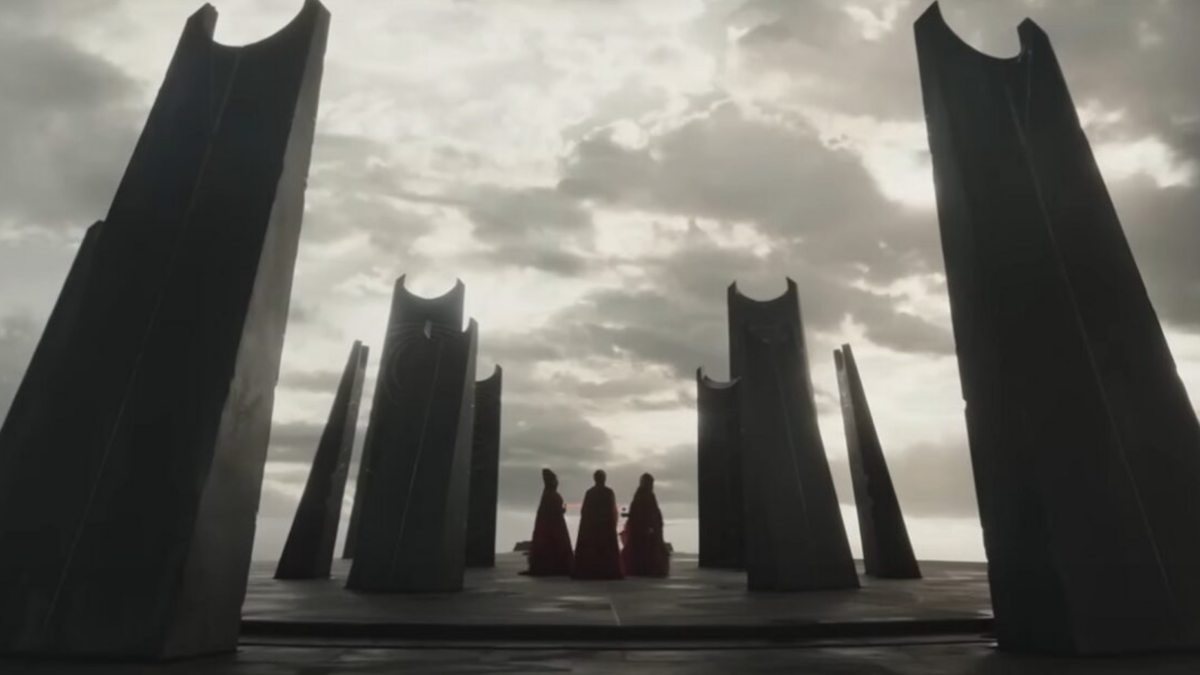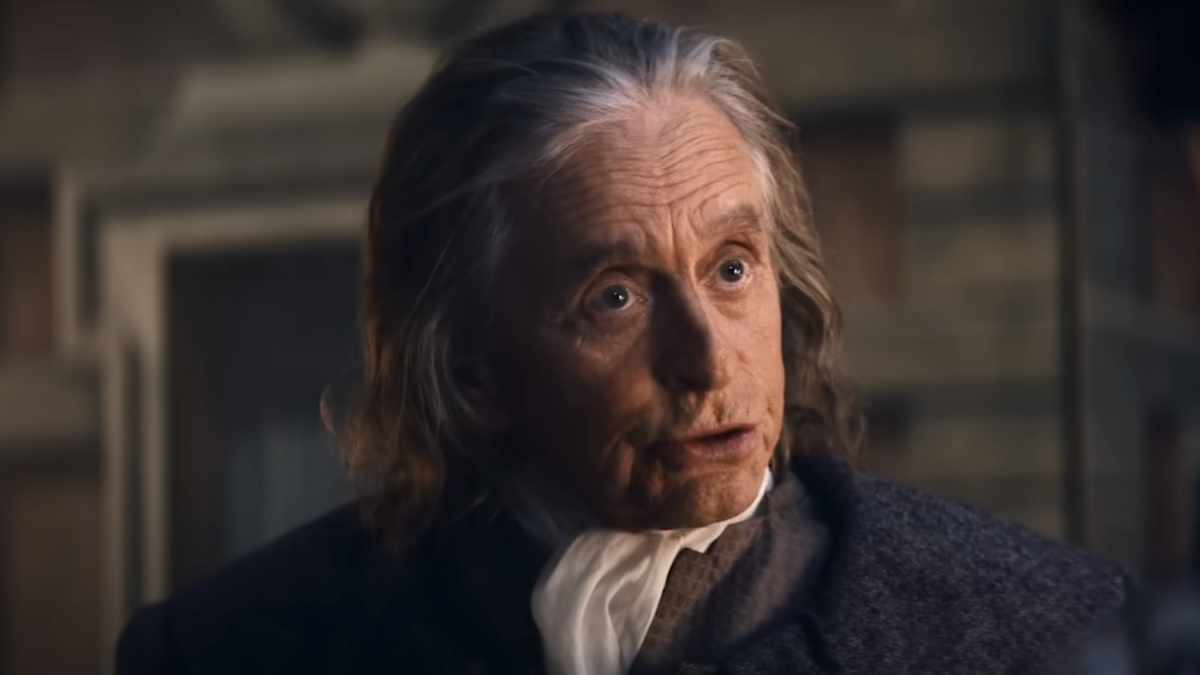Warning: spoilers ahead!
Star Wars always relied on mythical archetypes, but the newest television series descends into occult and pagan realms. For the first five episodes of “Star Wars: Ahsoka,” instead of an engaging story, the show’s energy focuses on the female-centric cast and reveling in all the animated characters from “Star Wars: The Clone Wars” and “Star Wars: Rebels” who are now in live action. It’s self-indulgent and boring.
Things pick up and get weird in episode six when the nominal witch Morgan Elsbeth meets a trio of bona fide witches, three Great Mothers named after the Greek fates and capable of wielding a distinct form of the Force called majik.
If you don’t live on Wookiepedia, the Star Wars wiki, or if you haven’t seen all seven seasons of “The Clone Wars” and all four of “Rebels,” some of that might sound more pagan than you’re accustomed to seeing in Star Wars. After all, the Force as described by Obi-Wan in “A New Hope” sounds more Eastern and Buddhist: “[The Force is] an energy field created by all living things. It surrounds us, penetrates us, and binds the galaxy together.” But as with much of the extended canon, storytellers expanded on the groundwork of the six movies.
The Old Force and the New Majik
According to Wookiepedia, these witches in the Star Wars universe connect to an “aspect” of the Force through ancient rituals, talismans, and voodoo dolls. They draw their power from living sacrifices and certain planets with malevolent energy. Their rituals in “The Clone Wars” are genuinely creepy, no matter your age. Their majik allows them to resurrect the dead as zombies, inflict pain from a distance, conjure invisibility potions, teleport, and make normal creatures into monsters.
If this all sounds like standard pagan fare, it is. Their witchcraft frightens Jedi and Sith alike. While their presence in the Star Wars universe is not new, there’s something different about seeing these frightening figures in live action.
In “Ahsoka,” they dress in matching red robes with gray face paint, and when a Great Mother speaks, there is a chorus of voices backing her. They form an unholy trinity, drawing triangles in the air among the three of them. When the secret map to their location is unlocked, the galaxy is overlaid with a triquetra, a traditional Trinitarian symbol.
A Children’s Show?
All this witchcraft and paganism is especially bizarre considering the rest of the show feels like it’s made for kids. The slow-moving plot follows two angsty teen apprentices. Sabine Wren has a tense, almost mother-daughter relationship with her master Ahsoka Tano. Her purple and orange hair screams teen rebellion. Her counterpart is Sith apprentice Shin Hati, a girl with bleach-blonde hair and thick black eyeliner. They are two sides of the same emo coin.
Rounding out the cast are their long-suffering, considerate masters. The Sith master Baylen Skoll (Ray Stevenson) surprisingly looks out for his apprentice. He advises her on how to earn a good place in the coming New Order. The Jedi Ahsoka Tano patiently endures Sabine stealing her things, betraying her, and talking back at every turn. There’s also General Syndulla, a widow and working mom who cares for her young son while investigating the Imperial remnants. Yet this tenderness feels incongruous when they finally reach the Imperial Grand Admiral Thrawn and the Nightsisters.
After five episodes of hurt feelings, misunderstandings, and overbearing parental expectations, all of a sudden there are frightening witches, a blue-skinned, red-eyed, ruthless Thrawn, and a chanting army of spooky stormtroopers. And the unnatural majik begins in earnest.
Satanic Distortions of Baptism and Resurrection
One mercenary accompanying Skoll and Noti is named Marrok, and when Ahsoka slashes him with her lightsaber, his body violently dissolves into green mist (green is the color Nightsister majik often takes). The stormtroopers that serve under Grand Admiral Thrawn all wear red ribbons around their armor, the same color as the Nightsisters’ robes, and they are called “Night Troopers.”
They are led by Captain Enoch, a name that’s shared with the Biblical figure who did not see death. In the finale, when a squad of troops is slain, the Great Mothers begin chanting in another language. Green mist enters the fallen troopers, and they then rise and continue fighting. For the first time in live action, we have zombie stormtroopers.
Also in the finale, Morgan Elsbeth receives the gift of shadows from the Great Mothers. She makes a vow that echoes a baptismal ceremony. She is asked, “Do you pledge yourself to the sisterhood, to the majiks, to the old ways? Do you abandon your old life for this new one? Your loyalty, your life?” To each of these questions, Morgan replies, “I do.”
The ritual culminates with a laying on of hands from one witch. Morgan’s eyes and head glow, she moans, then throws her head back. Her face suddenly shows dark lines. Then the witches conjure the blade of Talzin out of thin air.
Expect More Paganism
The season ends with Morgan dead but the Great Mothers and Thrawn free of exile. Skoll finds giant statues to the gods of Mortis, an obscure trio of warring, god-like beings from “The Clone Wars.”
All these villains remain at large at the season’s end. For this timeline of Star Wars shows — which includes “The Mandalorian,” “Ahsoka,” “The Book of Boba Fett,” and a coming movie that combines them all — it’s a safe bet that paganism is here to stay.









